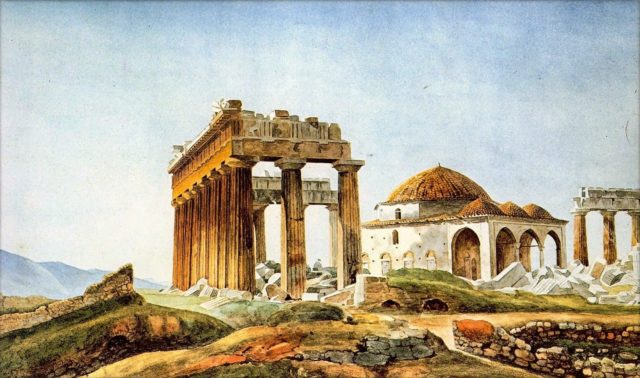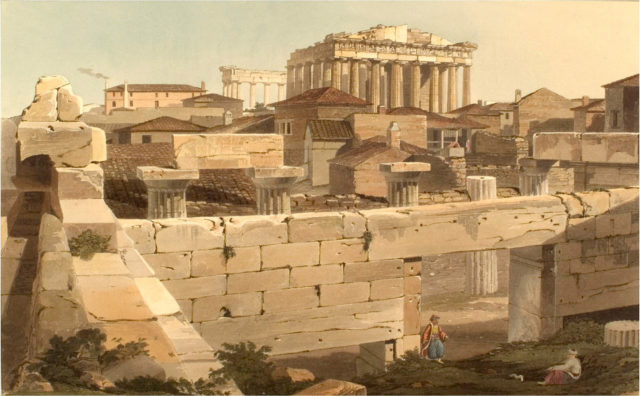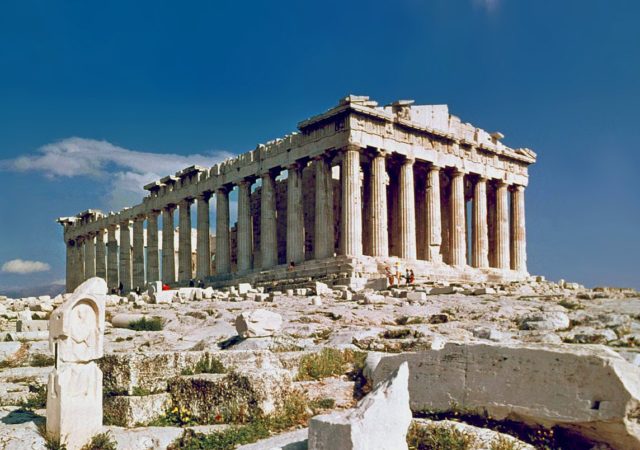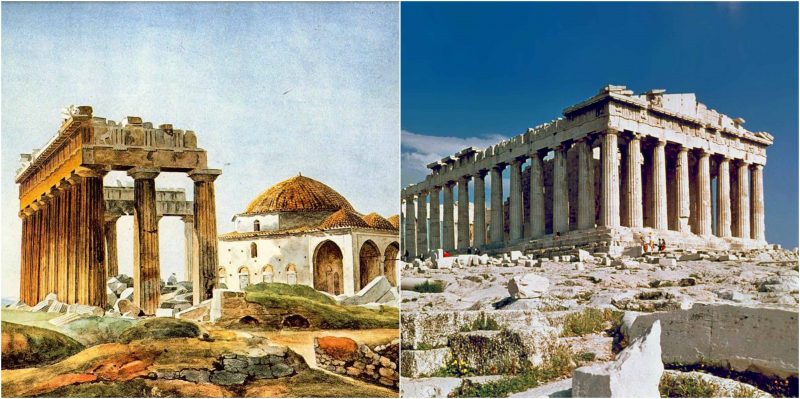Arguably, some of the most prominent Ottoman conquests had to be the conquest of the Constantinople, during which a segment of Ottoman Turkish Army decided to besiege the Florentine Army trying to defend the Acropolis. The Florentines successfully fought the siege, but not more than just over two years when in June 1458, the army surrendered to the Turks effectively ending the siege.
After the conquest, the Ottomans decided to restore the Parthenon for the use by Greek Orthodox, though very briefly. However, sometime by the end of 15th century, Ottomans Turks converted the significant part of Parthenon into a functional mosque.

There are no authentic historic sources suggesting the true intent of the Turks to convert the Parthenon into a mosque. However, there is no shortage of speculations. One account suggests that Ottoman King Mehmet II had in fact appropriated the conversion and issued orders to convert and if necessary build parts of mosques, as a form of punishment for an Athenian plot against the King. The apse of the Parthenon was turned into Mihrab (the part of the mosque where Imam stands and leads the prayers). The existing tower that was constructed previously during the height of Roman Catholic occupation had to be extended upwards in order to make it into a minaret.
Christian altar and icons were removed thus, and a mimbar was installed right next to the mihrab (mimbar is a raised stage with stairs upon which Imam stands and delivers the sermon during Friday prayers). The presence of any icons, statues or imagery in a mosque is strictly prohibited in Islamic tradition. Therefore all the walls were whitewashed to cover all existing icons of Christian saints.
One important aspect of the Parthenon during Ottoman rule was that despite elaborate alterations coupled with the conversion of Parthenon into a mosque, the entire structure of the building was kept intact and no damage was incurred by the Ottomans, or by the Romans before that. When a famous Turkish traveler came upon the building while it was being used as a mosque, he couldn’t help but feel perplexed by its majesty. In his account of the Parthenon, Evliya Celeb expressed immense marvel at the structure in his poetic works and described it as some sort of Impregnable and impenetrable fortress that seemed to have been constructed by some divine agency and not by humans.

Some of the most amazing depiction of the Acropolis comes from the writers and artists from the 16th and 17th centuries, specifically by famous French artist Jacques Carrey who in 1674 visited the Parthenon and decided to sketch its sculptural decorations. A few years later in 1687, another sketch of the Parthenon was made by an engineer named Plantier, who was given the project by a Frenchman Graviers d’Ortieres. These sketches are the only depictions of the Acropolis, particularly those made by Carrey, provided the later historians with the only evidence of the structural condition of the Parthenon and its many sculptures, before the devastation that befell on the Acropolis in late 1687.
1687 proved to be the most unfortunate and ominous year for the Parthenon as it became the center of the tragedy that changed the shape of the structure for all he generations to come. It was the height of the Great Turkish Wars that spanned over sixteen years from 1683 to 1699, a Venetian expedition led by Francesco Morosini launched attacks on Athens with an aim to capture the entire Acropolis.

The Ottoman Turks in a desperate attempt to defend the city and its local Turkish community used the Parthenon as a gunpowder magazine.
Here is another story from us: This 13th century Mosque is the one of oldest buildings in Ghana
During the longstanding skirmish, in September 1687, Venetian fire a mortar from behind the Hills of Philopappus that landed in the Parthenon and blew the entire magazine, destroying a large portion of the building. The explosion was so powerful that it blew up the entire central portion of the building, significantly damaging cella’s walls.
